Welcome to
Young's Photo Gallery
James W. Young, Professional Photographer
Photographic History of Table Mountain
Observatory

Part 5: Optical Astronomy Expands: New Telescope,
Equipment, Programs, and Personnel
By James W. Young
retired astronomer from Table Mountain Observatory
The new Nishamura 16-inch f/20 Cassegrain Telescope
The new telescope building is finished, an 'ObservaDome' is placed on the top edge, and
finally the newly purchased telescope is then installed. Follow along with the history of
this facility....
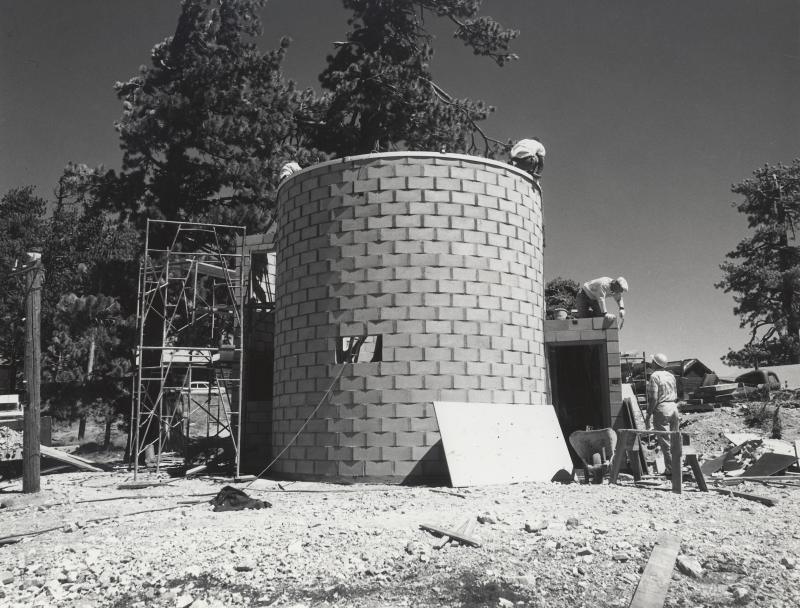
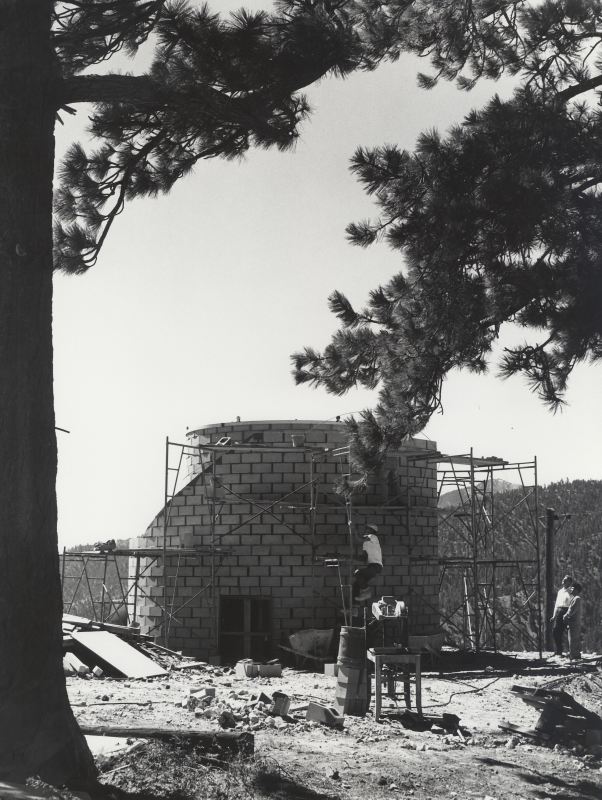
The finishing touches of the building structure in June 1962
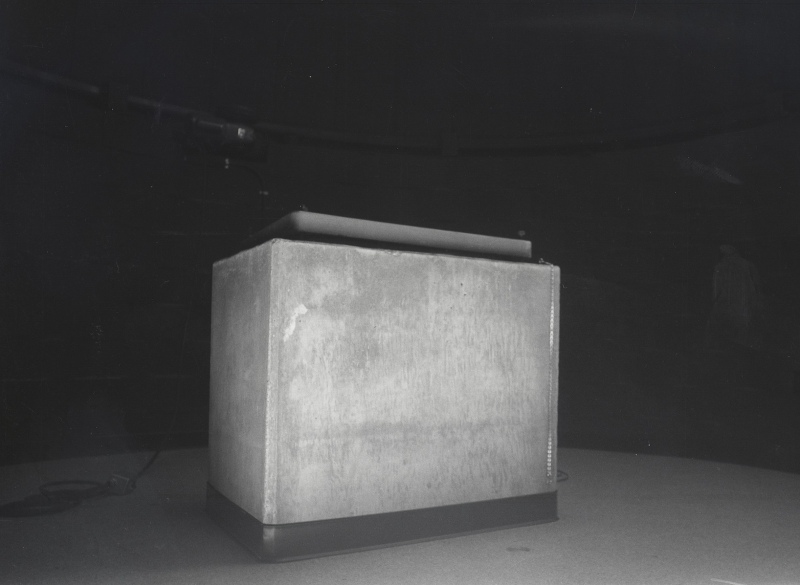
The concrete telescope pier at the upper level to hold the 16-inch telescope
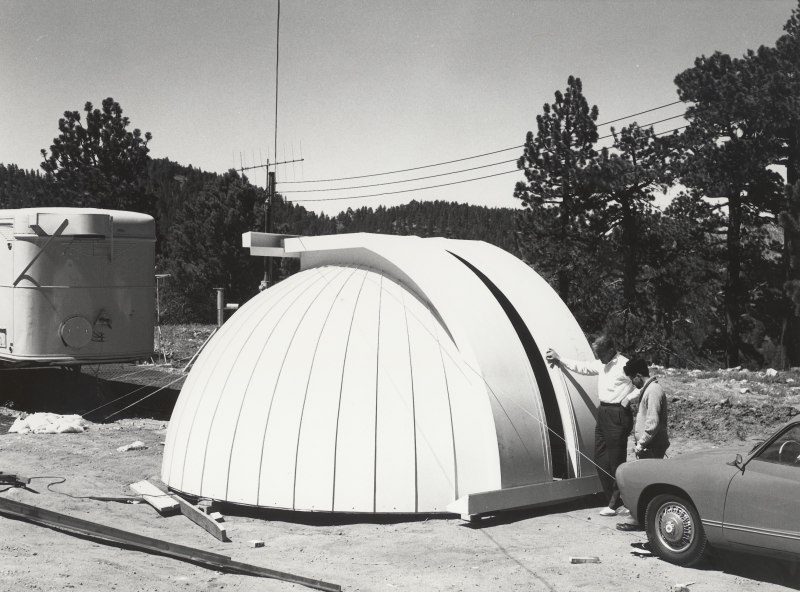
The new 'ObservaDome' arrives at Table Mountain
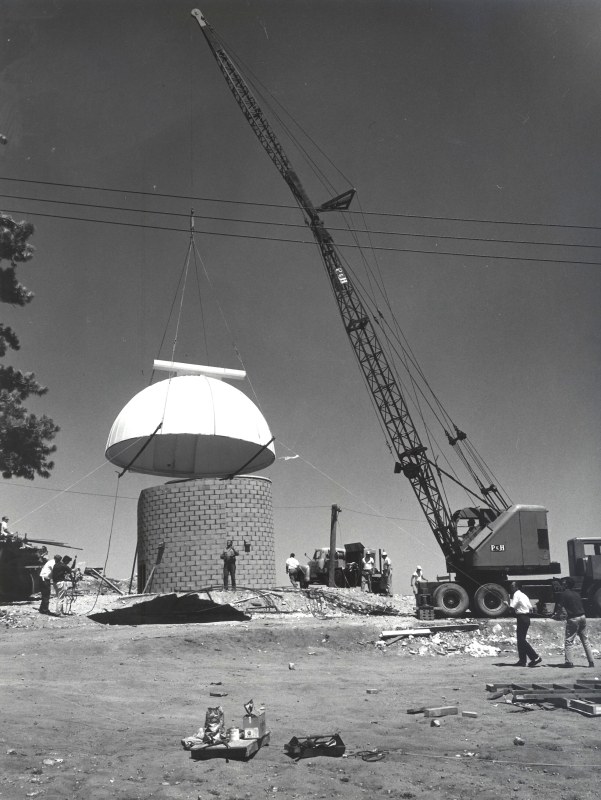
...and placed on the building...July 1962
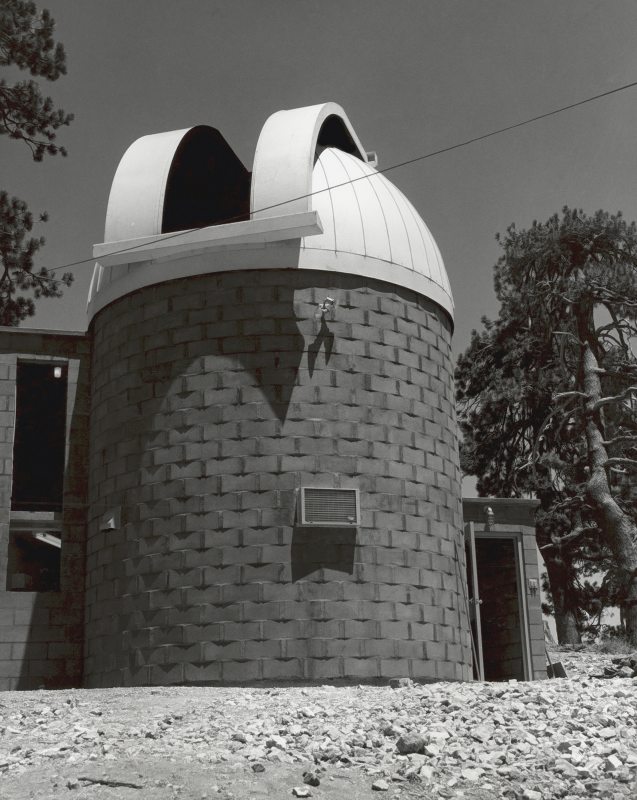
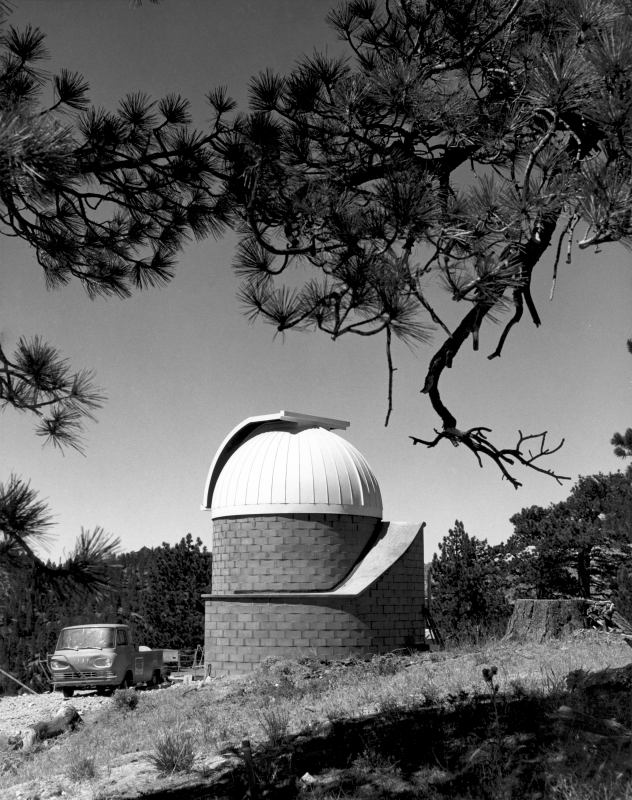
The building was ready for the 16-inch telescope installation in July 1962
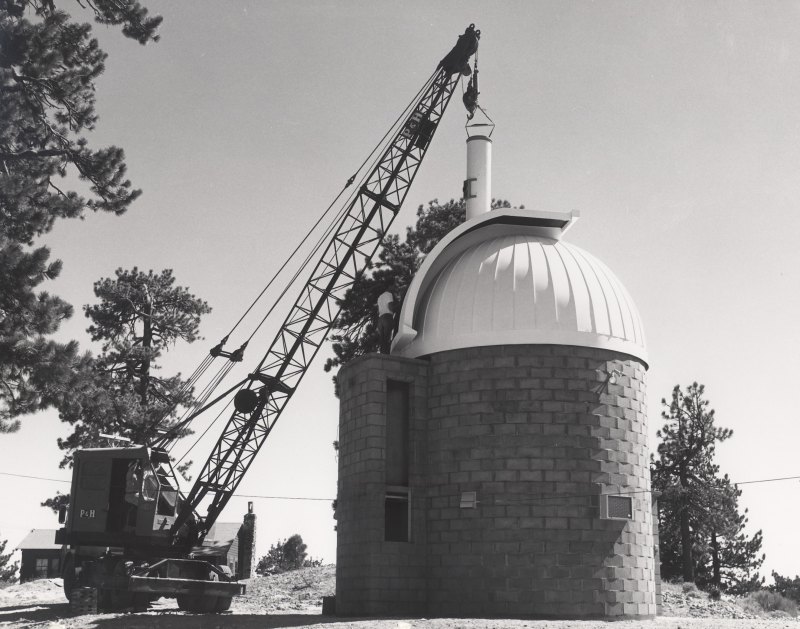
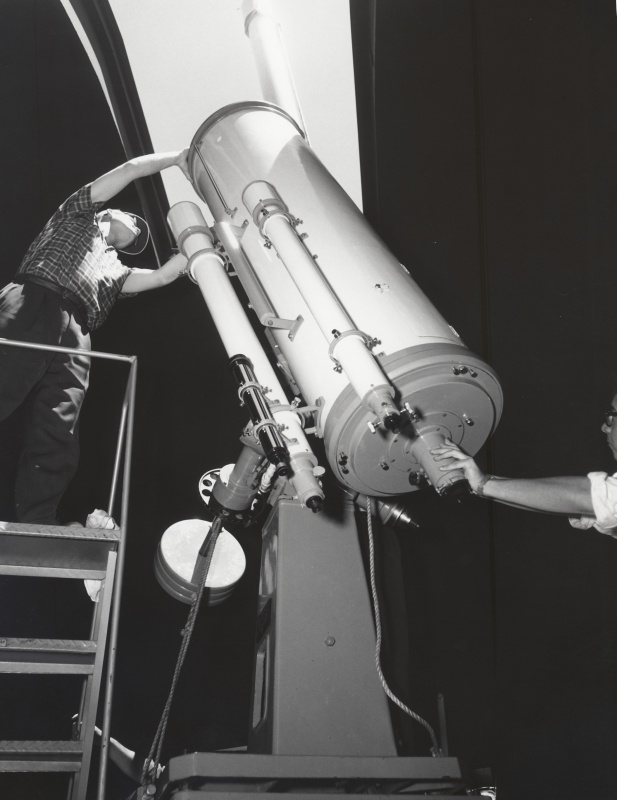
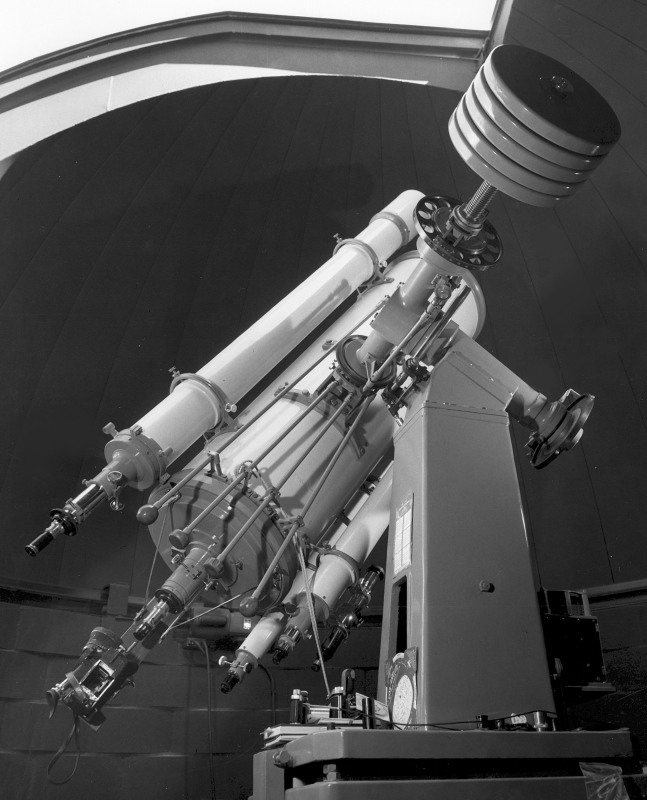
Telescope installation, adjustments, and finished; ready for use! - late July 1962
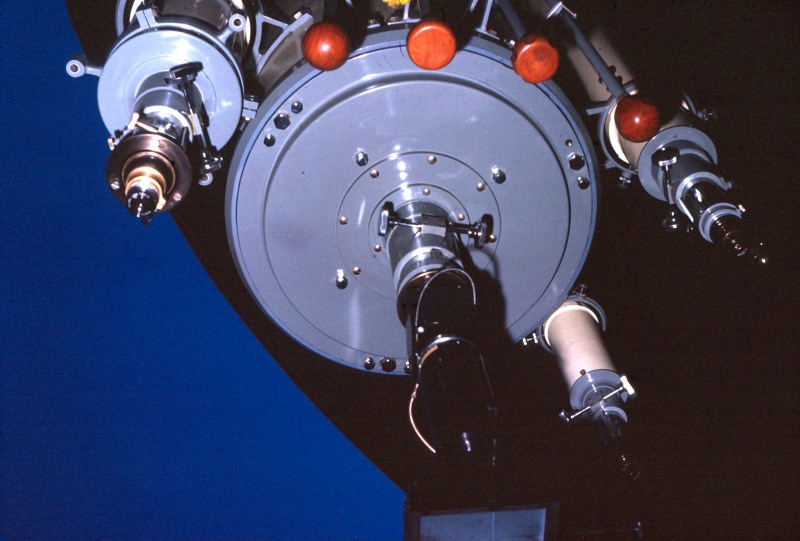
The 16-inch telescope had four different finder scopes: a 6-inch, 4-inch, 3-inch and 2-inch
refractors. The two inner wood knobs locked the axes, the two outer knobs allowed the
operator to move in RA or Dec axes slowly for searching and acquiring the desired object.
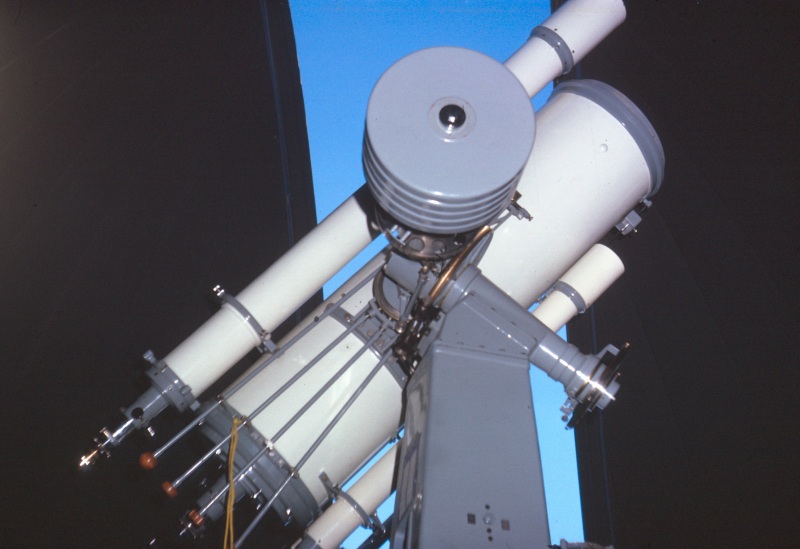
The finished telescope - August 1962
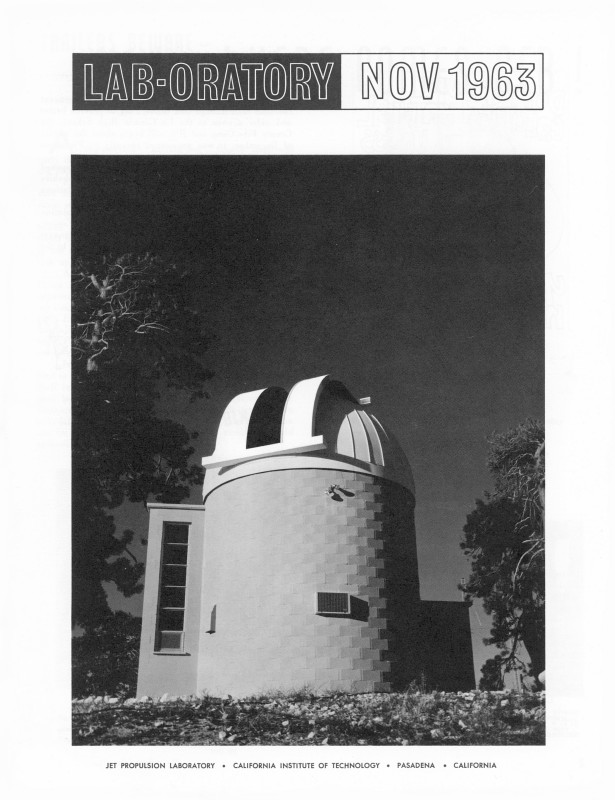
JPL's 'Lab-oratory' magazine featured the new Table Mountain Telescope
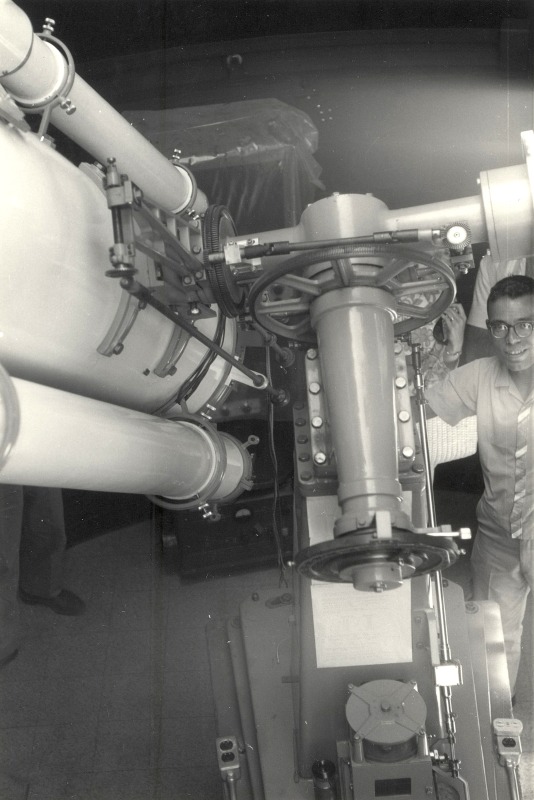
The author familarizing himself with the new instrument - December 1962
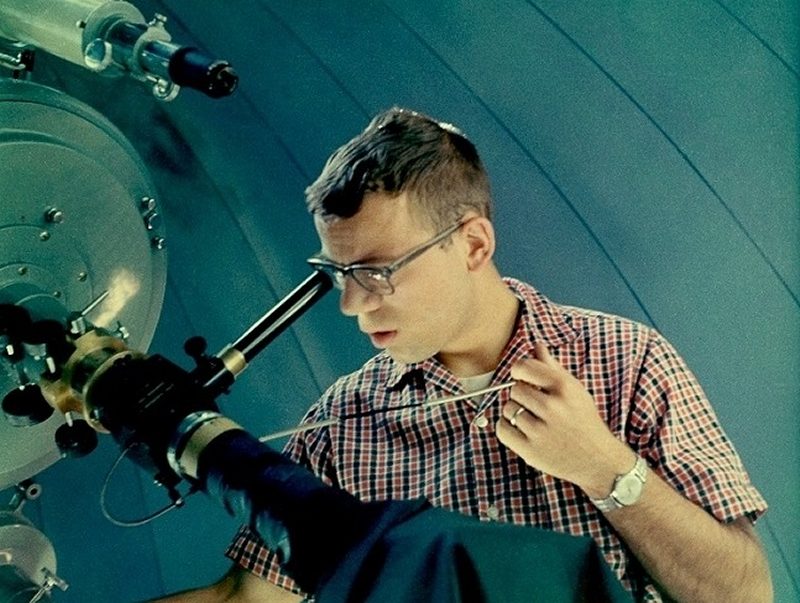
Taking imagery with the 3 1/4 x 4 1/4 inch plate camera - December 1962
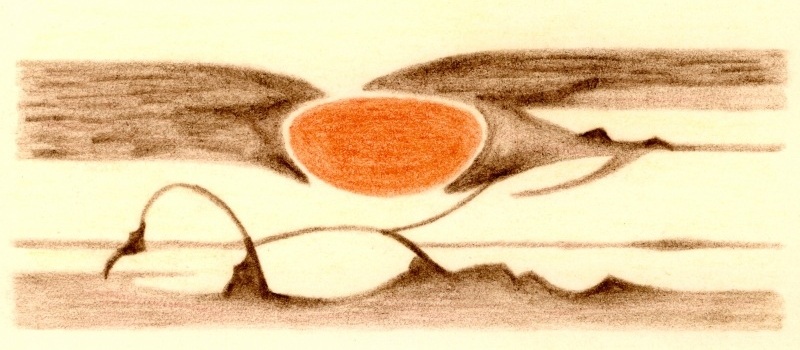
h
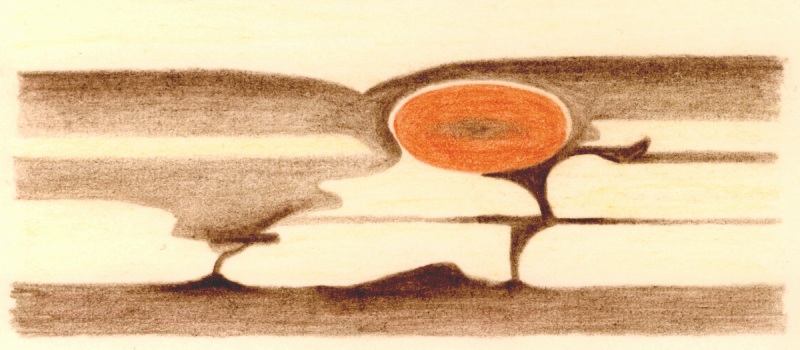
Capen taught the author how to draw planetary features while observing. Here are two
such drawings of the Great Red Spot on Jupiter made in December 1962
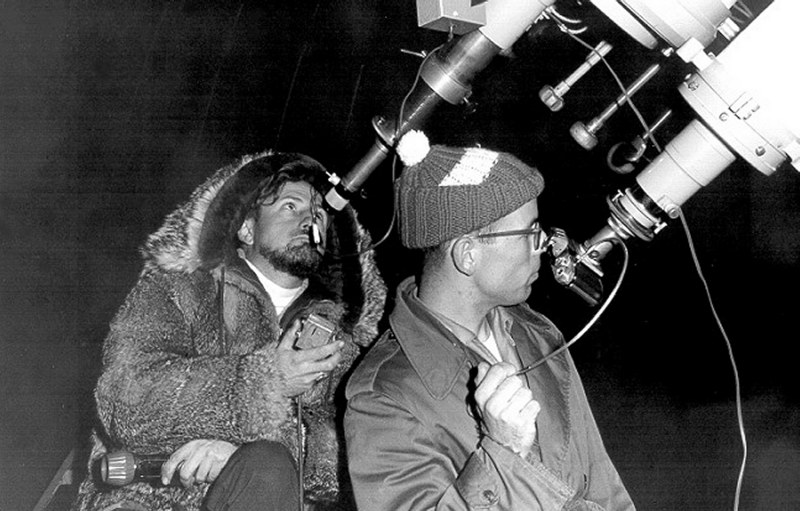
Capen and Young at the telescope. Capen is guiding on a comet, while Young is exposing
film using a 35mm camera - Spring 1963
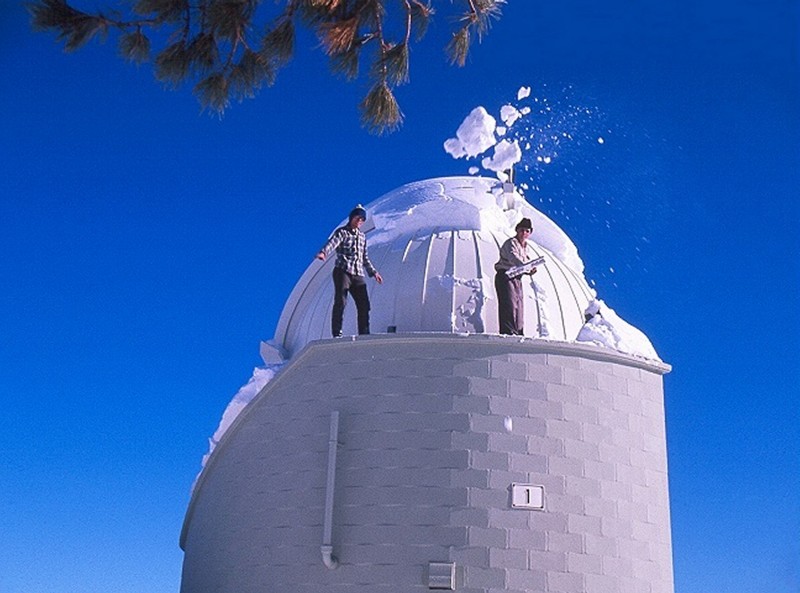
Young (left) and Jack Lyon removing snow from the telescope dome; frequently done in the
winter months - Winter 1962-63
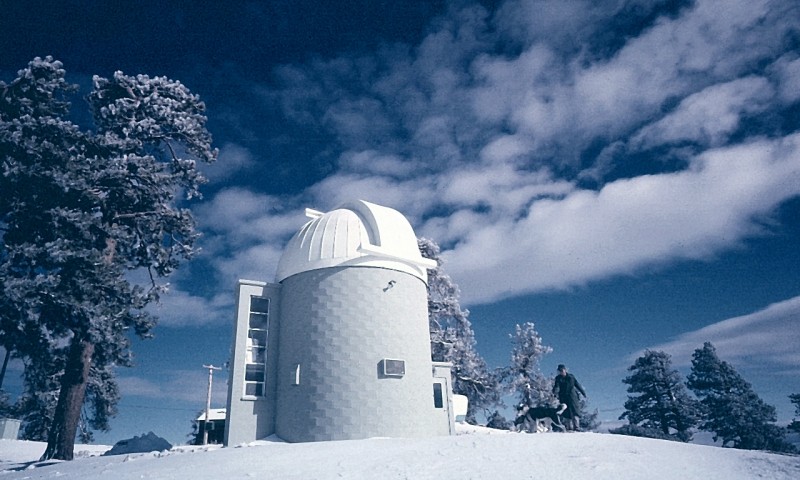
A cold winter morning in January 1964
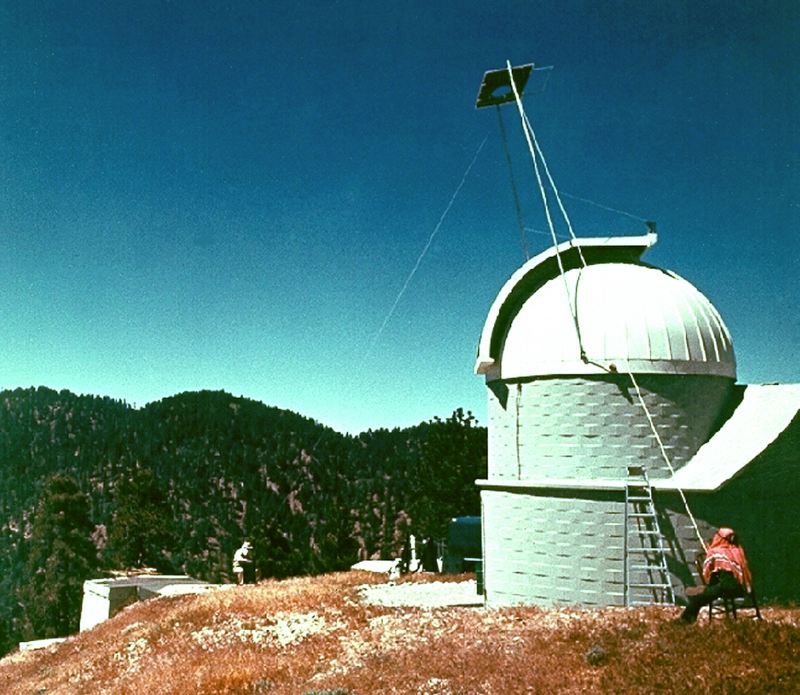
A sunscreen attached to the telescope dome, supported and moved by Jack Lyon on the
left, with Mars Capen (Capen's older son) on the right. This screen was necessary to
block out the nearby sun while imaging the Venus inferior conjunction in June 1964
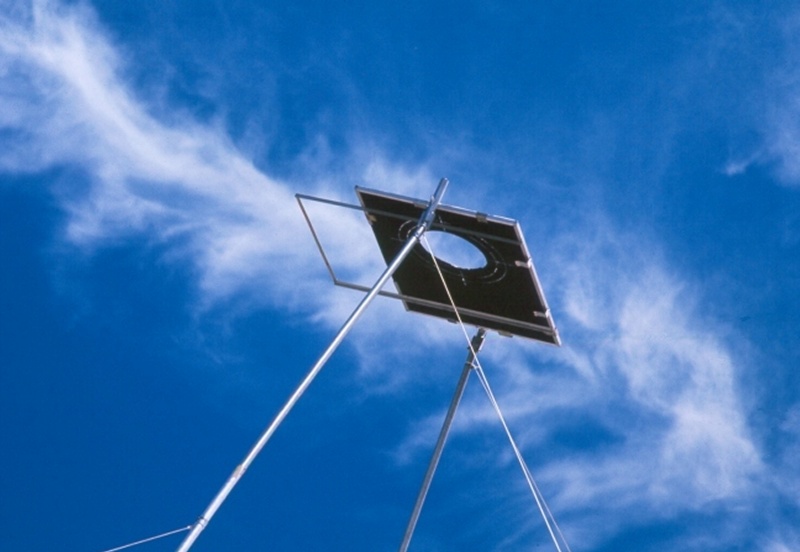
The sunscreen made by Capen and Young
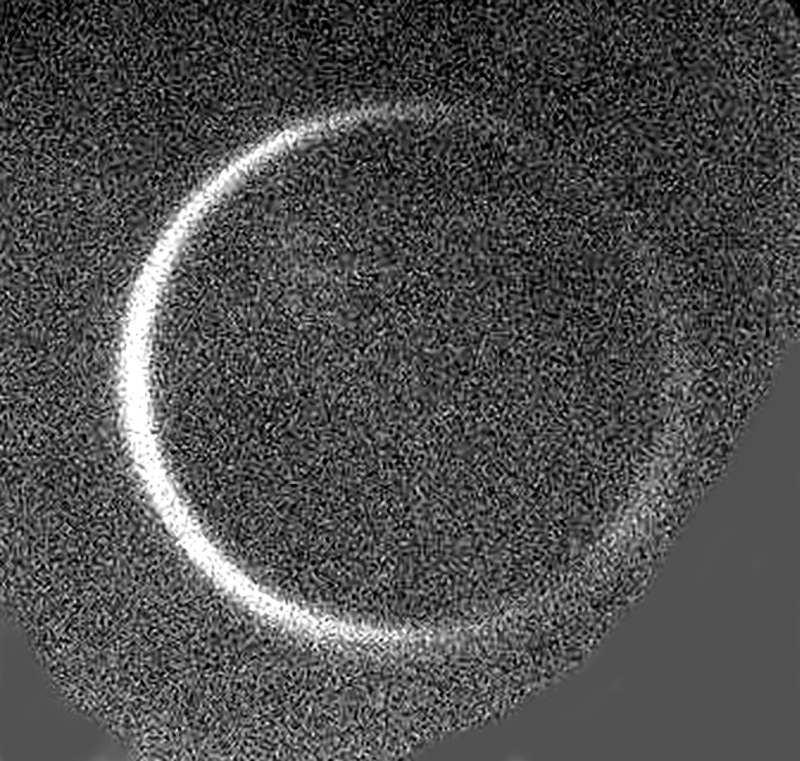
Our best 'inferior conjunction' image of Venus in June 1964
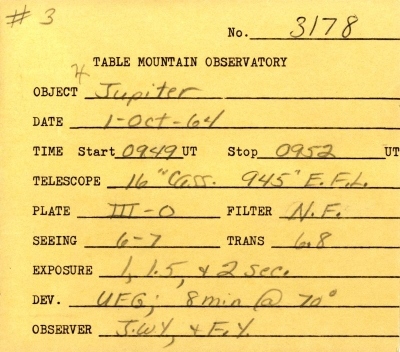
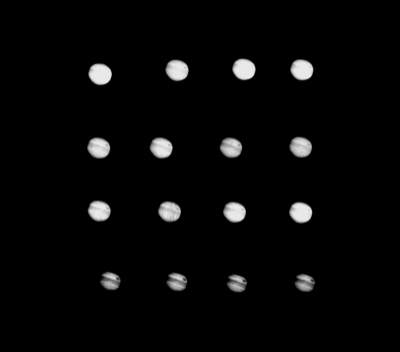
The synoptic patrol of the four brighter planets in various wavelengths was made every
clear night. Each photographic plate was logged, and an envelope was made to hold the
plate after processing. The envelope included the log #, the object, the date, the time,
the telescope and focal length, the emulsion wavelength (in this case, a III-O was for
blue light), a filter (if used), the atmospheric seeing and sky transparency, the shutter
exposures used, the processing developer and time of processing, and finally the initials
of the observer(s). In the above case, JWY is for the author, and FY is for Frances,
the author's wife who assisted the observation.
The images to the right are of Jupiter, and is the actual contact print of this particular
observation - October 1964
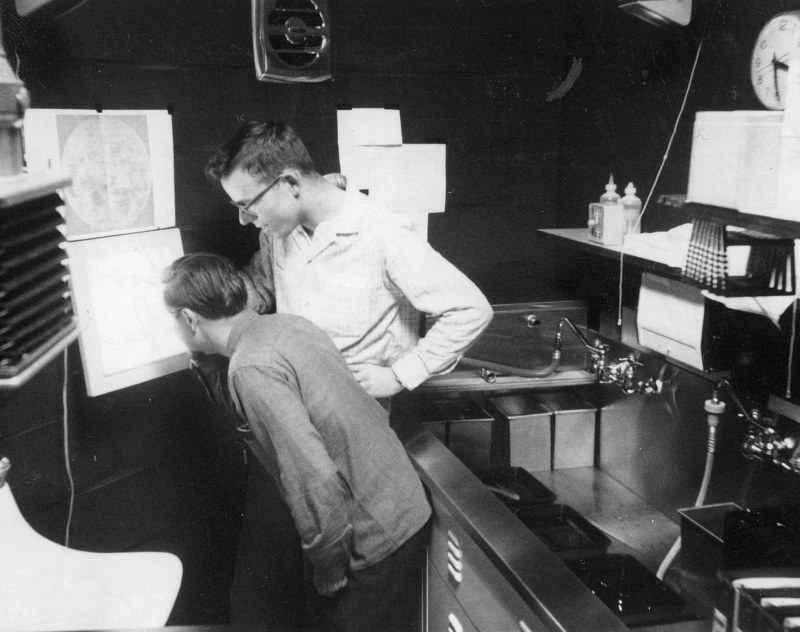
Capen and Young inspecting images using a light panel
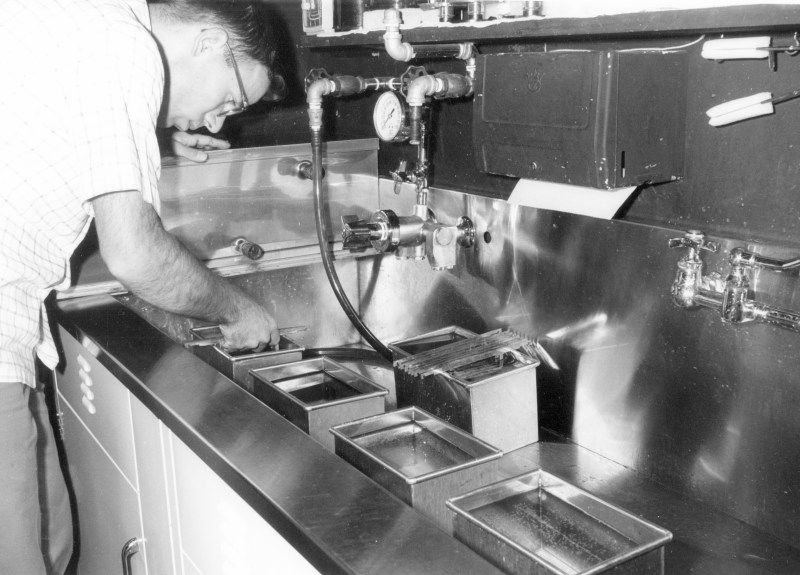
Young demonstrating the processing of Kodak photographic glass plates
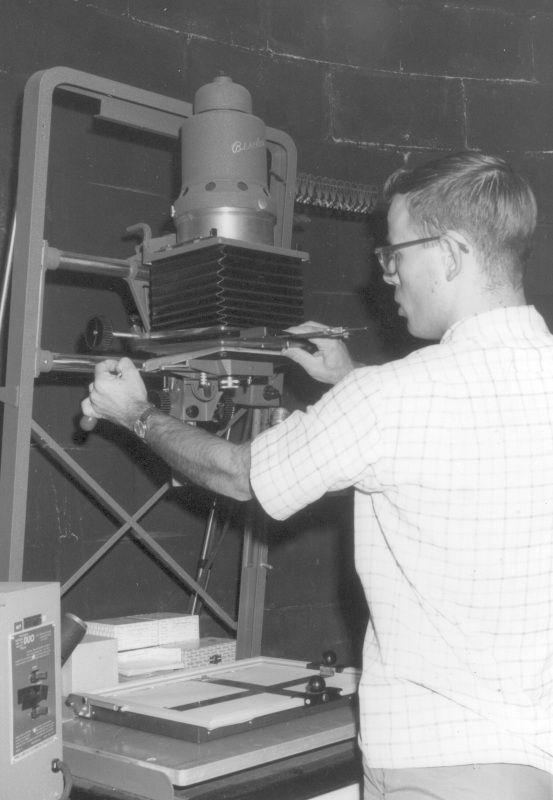
Young preparing the enlarger to print images from a glass plate
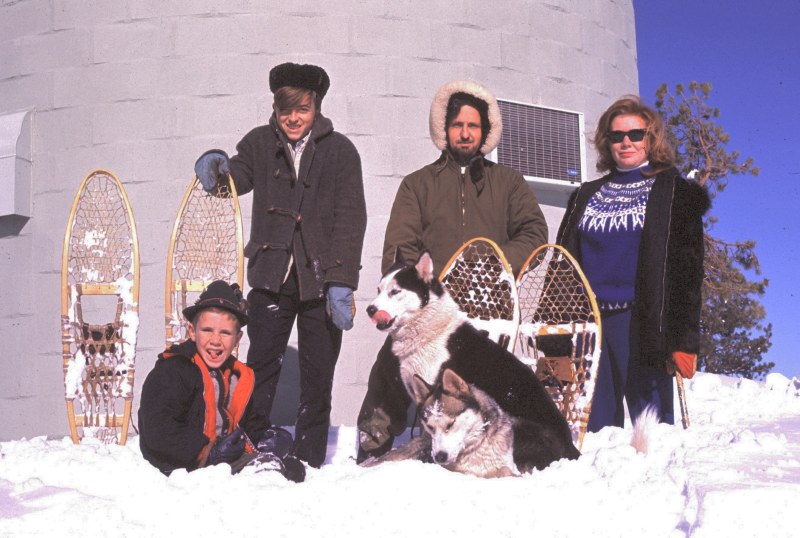
Charles Capen and family: Standing, L to R; Mars, Chick, Virginia. Down in the snow,
L to R; Rigel, Volk and Kometa (Capen's two Siberian huskies) Winter 1963-64
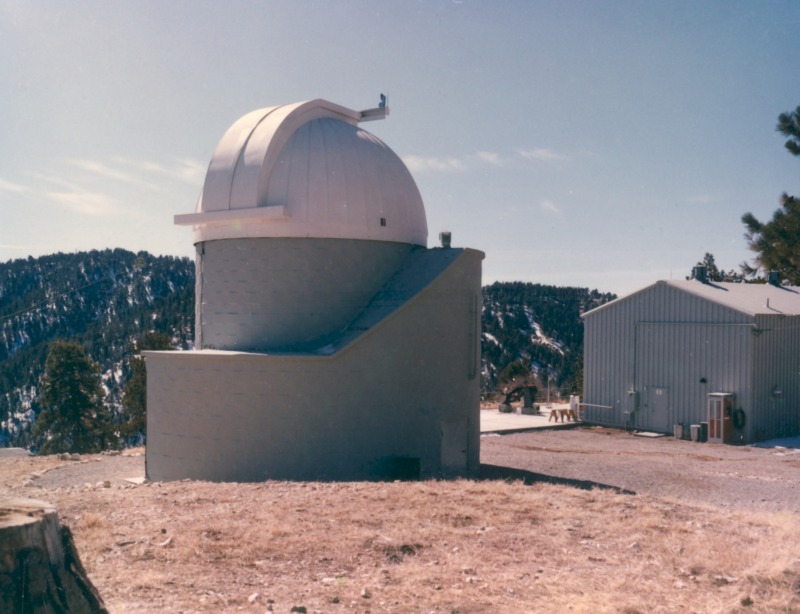
The new Butler building west of the 16-inch telescope building in 1964
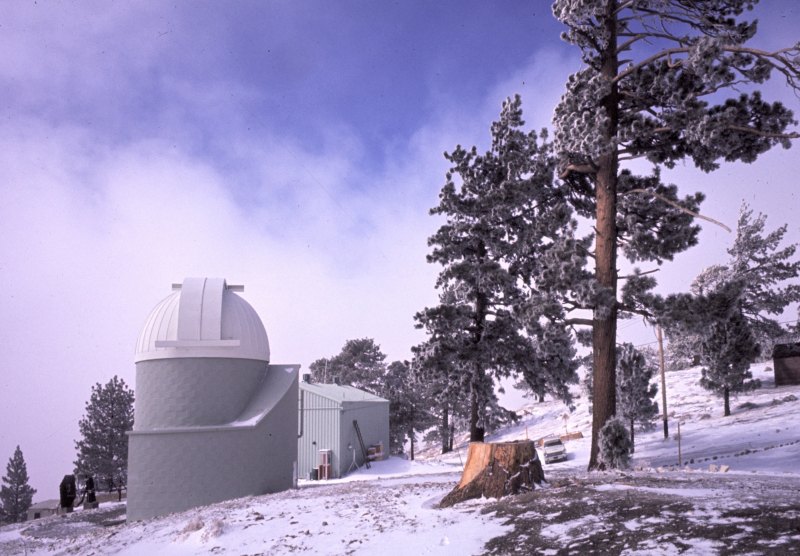
The two newest buildings at Table Mountain, now in a numbering scheme: the telescope
building is now TM-1, and the Butler building is TM-2. The two original Smithsonian
bunkers (off the image to the lower left), were numbered TM-3 collectively.
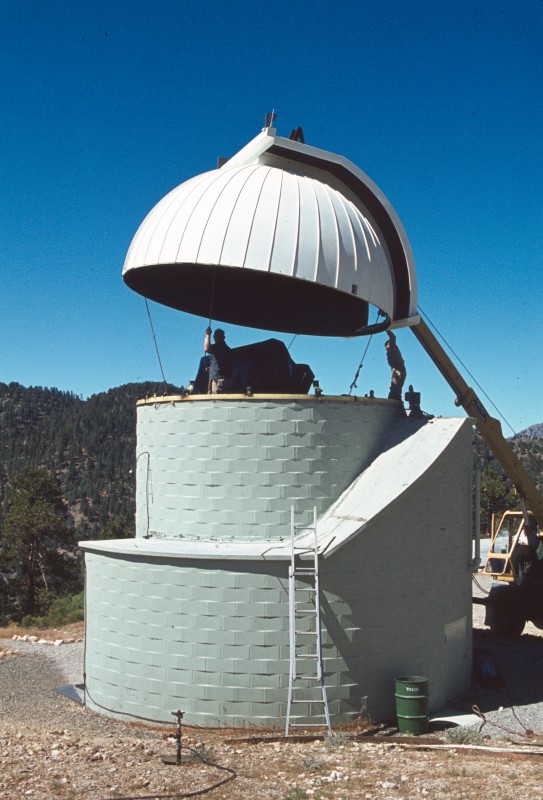
After 3 harsh winters, the original 'ObservDome' was found too difficult
in keeping the snow and serious winds ourt of the inside telescope viewing
area. Here it is being removed in July 1965.
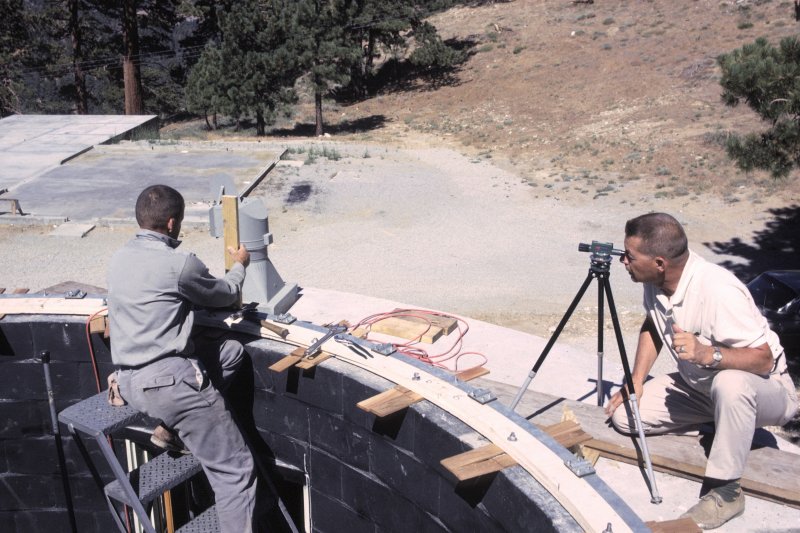
Capen, and JPL, contracted for a new and better weather rated dome from Ash Dome in
Plainfield, Illinois. The owner-operator, Ole Olson (right) and his assistant prepare the
top edge by leveling the base of the new 16-foot dome installation. It was learned from
them that this was the most critical preparation for installing their dome.
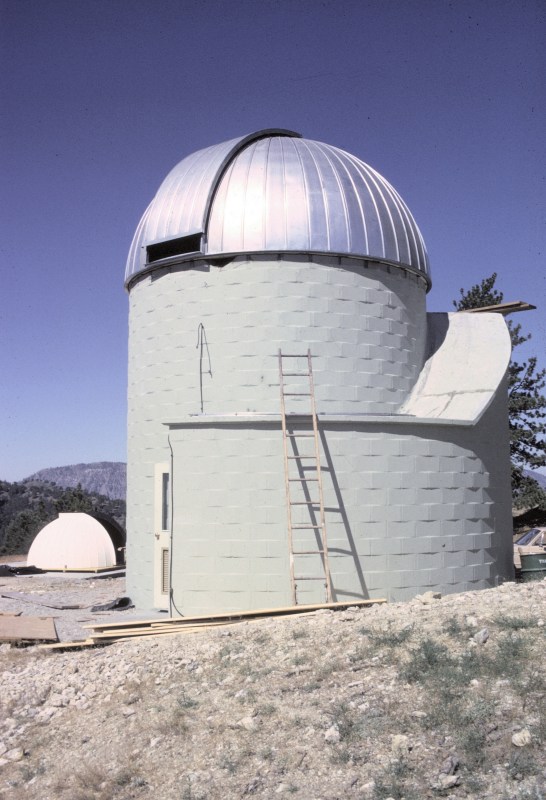
The finished 'Ash Dome' atop the telescope building, TM-1 - July 1965
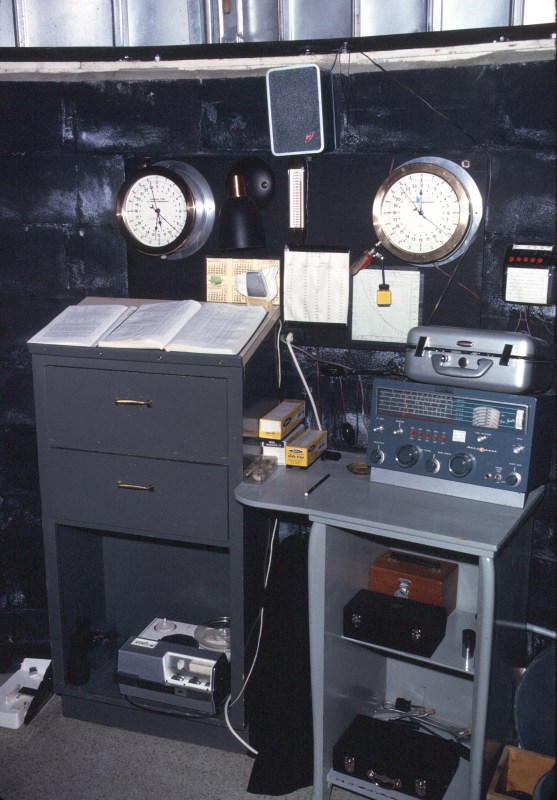
Capen and Young set up a small observing table, along with a shortwave radio,
a WWV receiver, tape recorder, eyepiece cases, tools, glass filters, and two
drawers for extra materials - Fall 1965.
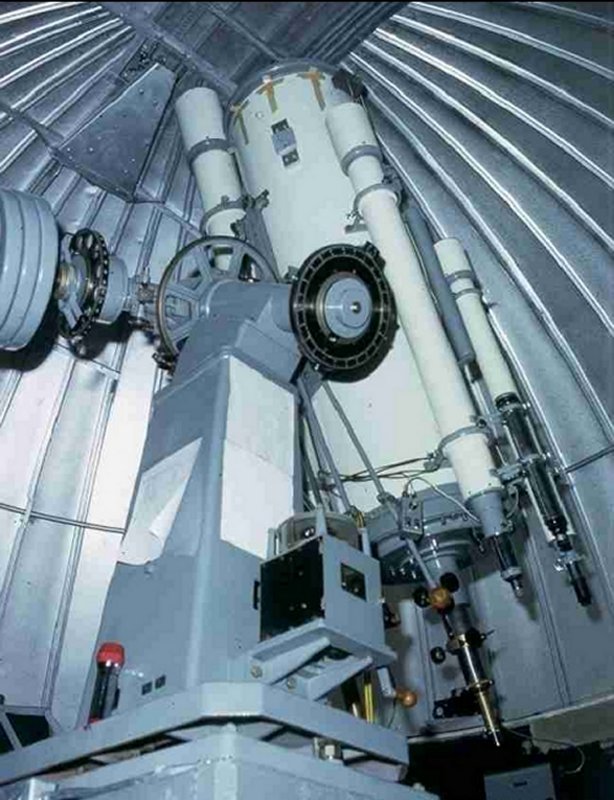
The complete telescope in the summer of 1966
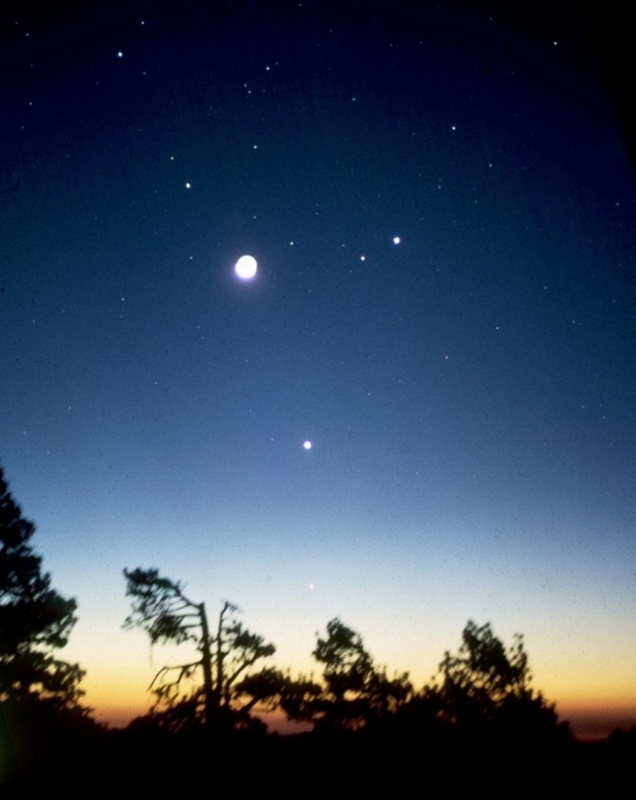
A four-planet conjunction with the crescent moon on August 14, 1966. Mercury is the
faint one just above the center tree, the going up is Venus, further up is the moon, with
Mars and Jupiter to the right of the moon. The two stars in the constellation of Gemini
are above the moon slightly to the left; Pollux and Castor.
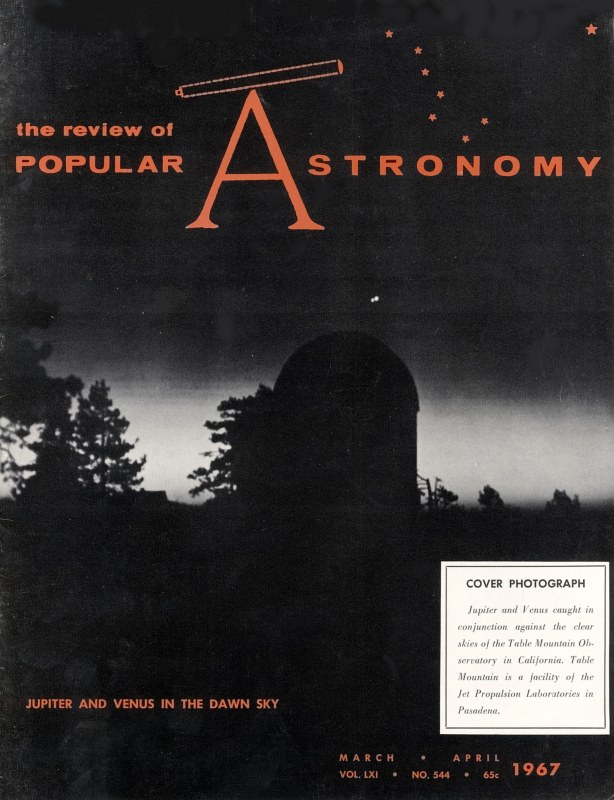
The magazine 'Popular Astronomy' featured an image of the 16-inch telescope with the
conjunction of Venus and Jupiter taken in August 1966.
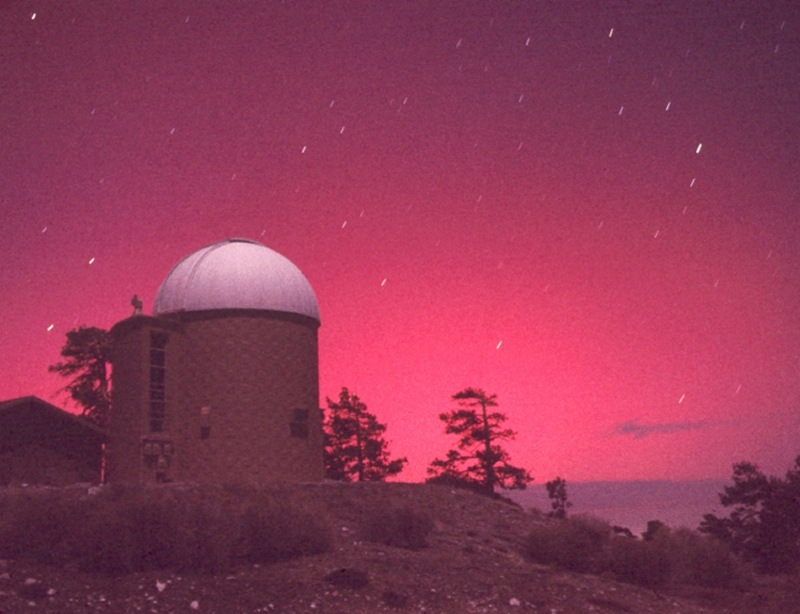
A very rare red aurora graced the skies over the Mojave Desert northeast of Table Mountain
on the evening of April 21, 1981.
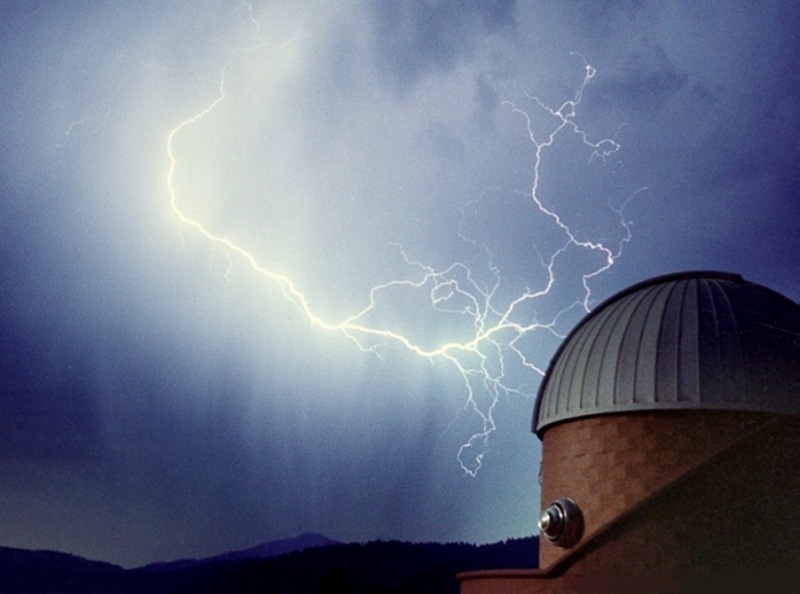
During a heavy rainstorm in September 1981, a bright nearby lightning strike was imaged
about the 16-inch telescope building.
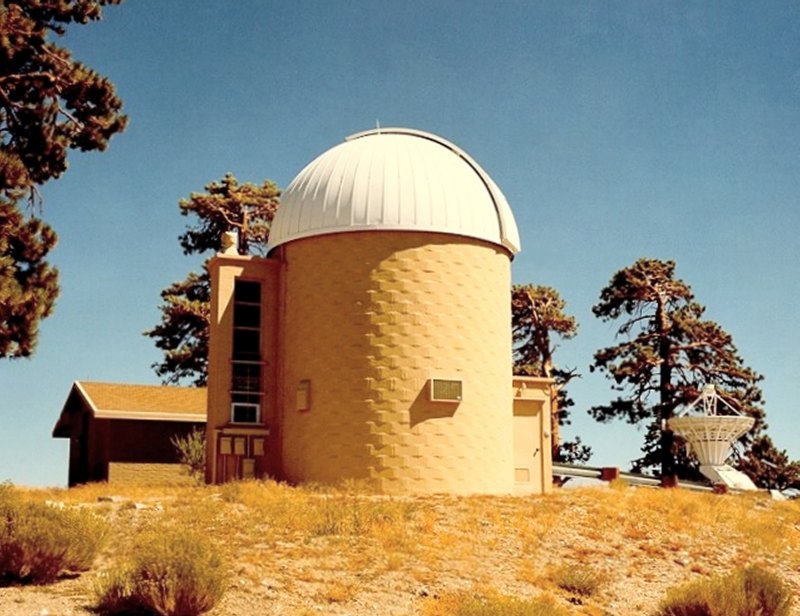
TM-1 newly painted and used by the Claremont Colleges under the direction of Dr. Sandy
Sandmann. The Beila 16-inch telescope was removed in 1975, and Sandmann installed a
more modern Ealing 16-inch f/11 Cassegrain telescope for his study of variable stars.
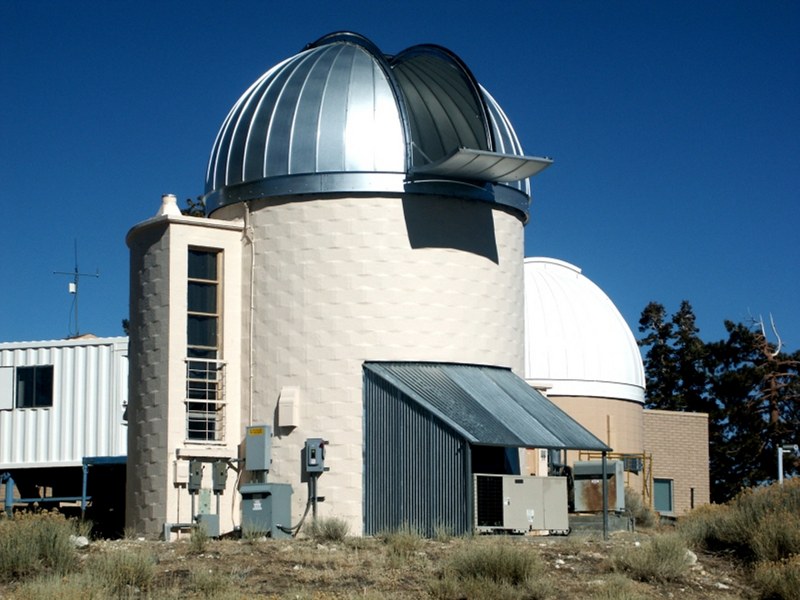
In the 1990s TM-1 was converted for a new use by JPL's Richard Cageao: A Fourier
Transform Ultraviolet Spectrometer (FTUVS) is a high resolution interferometric
spectrometer for the measurement of atmospheric molecules with resolved spectral
features in the 290-800 nm spectral region. This instrument uses the Sun or Moon as
a light source, and thus measures the absorption spectra of particular molecules.
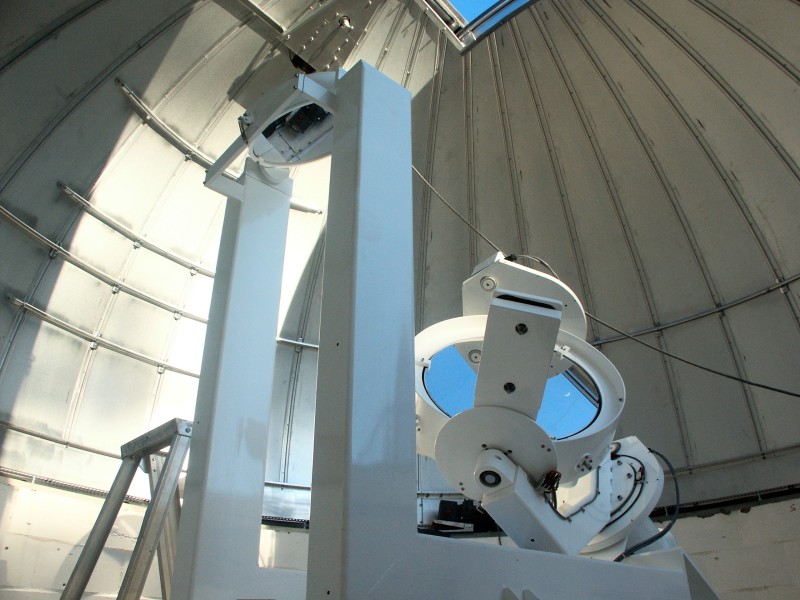
The optical devices and mirrors of the FTUVS system now in TM-1 - 2003
The 10-inch f/2 Schmidt Camera
In early 1984, JPL's John Trauger was informed of an old 10-inch Schmidt camera owned
by Ted Haberman of San Dimas, California. Haberman was willing to loan this 'camera' to
Table Mountain for photographing Halley's Comet in late 1985 into 1986. Trauger, Steve
Edberg (JPL's International Halley Watch), and the author traveled to San Dimas to inspect
the instrument. It was aesthetically in poor condition, but the mirror and corrector plate
appeared to be perfectly fine. Haberman also agreed that the author was to completely
clean, refurbish, and maintain the instrument in perfect working condition for the period of
the loan, and then return it after the passage of Halley's comet. All loan paperwork was
completed in March, and the instrument was transported to Table Mountain in a JPL van.
Coincidentally, the entire radio science effort at Table Mountain had just been moved north
to the 'Caltech Owens Valley Radio Observatory', thus leaving TM-21 completely vacant to
use for cleaning and the refurbishment of Haberman's Schmidt camera. The author spent
just over 270 working hours, well into 1985, before completing the task.
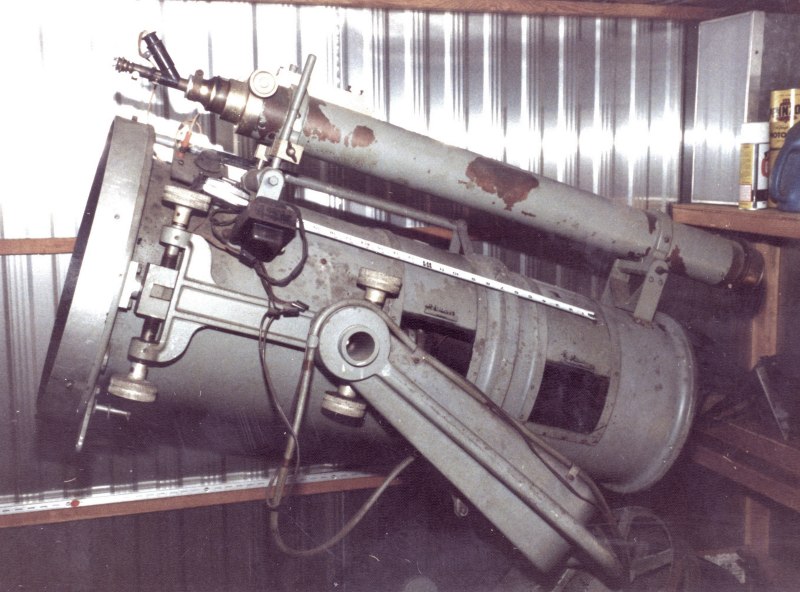
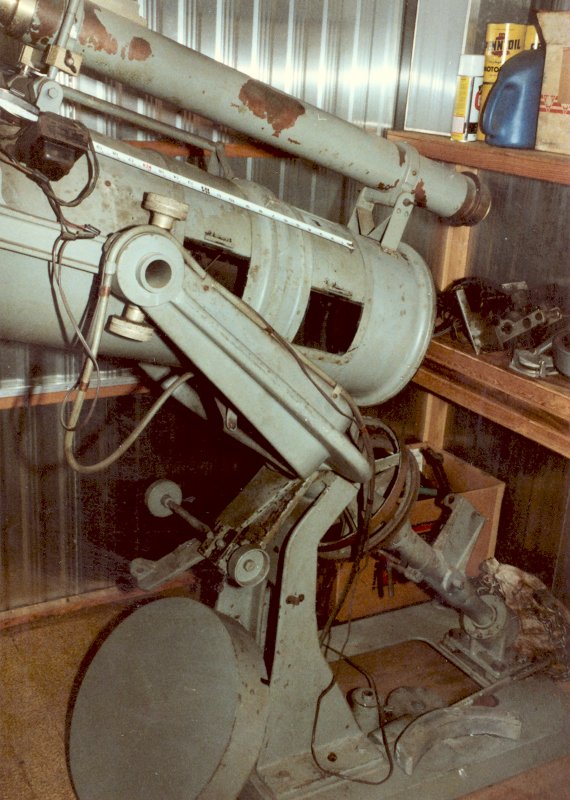
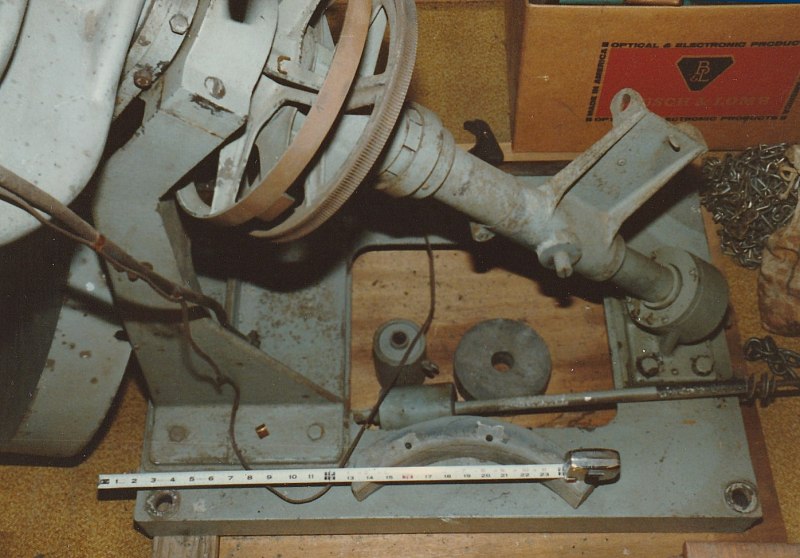
The Schmidt camera at Ted Haberman's San Dimas home in January 1984
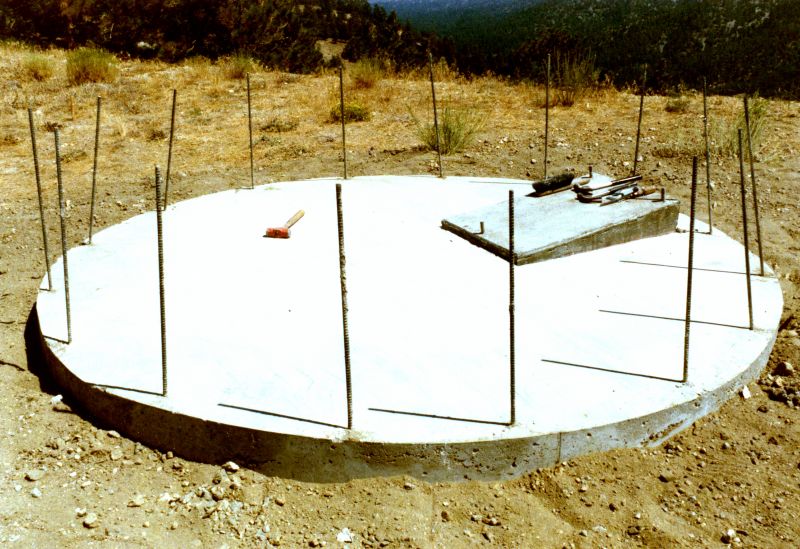
TM-24 floor and building foundation - Summer 1985
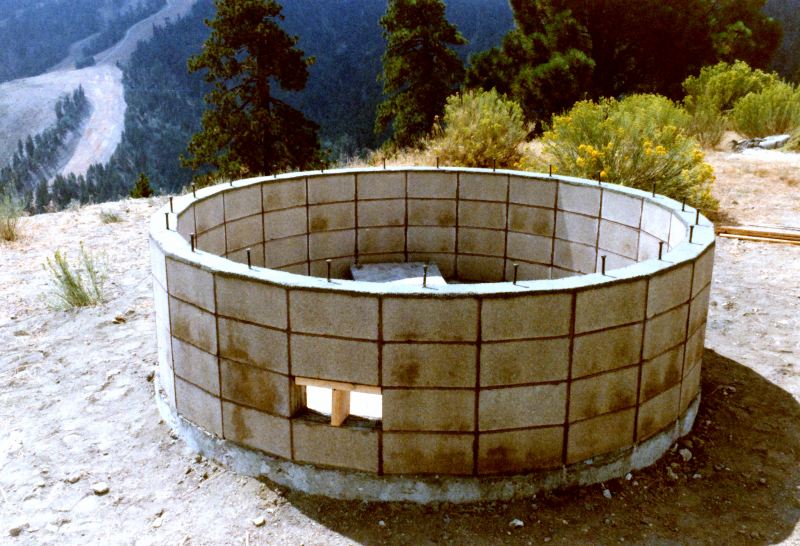
TM-24 building wall - Summer 1985
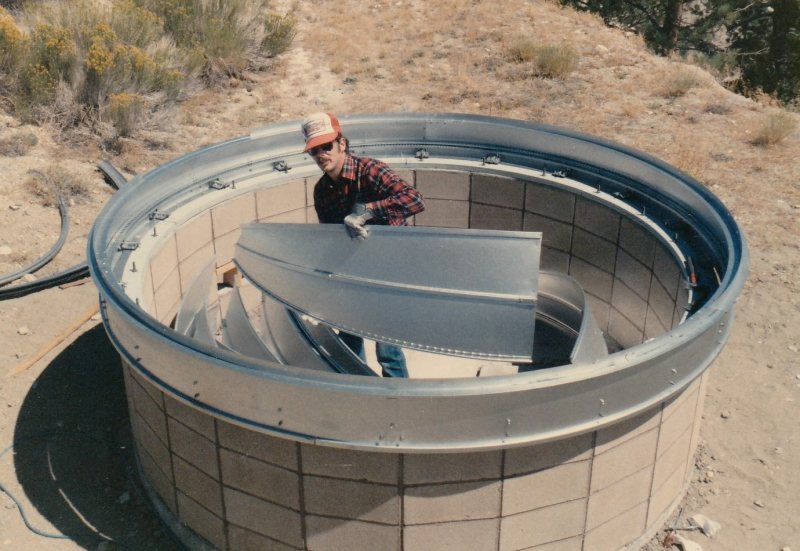
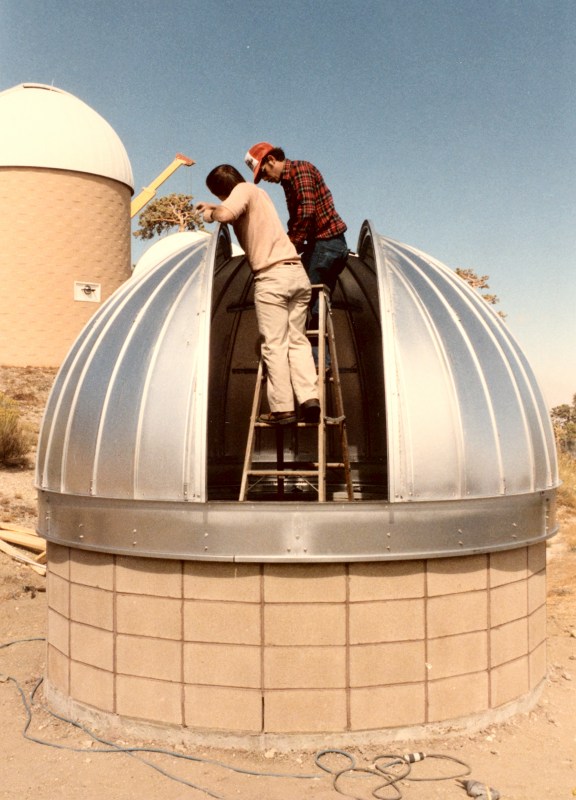
10-foot Ash Dome construction for TM-24 - September 1985
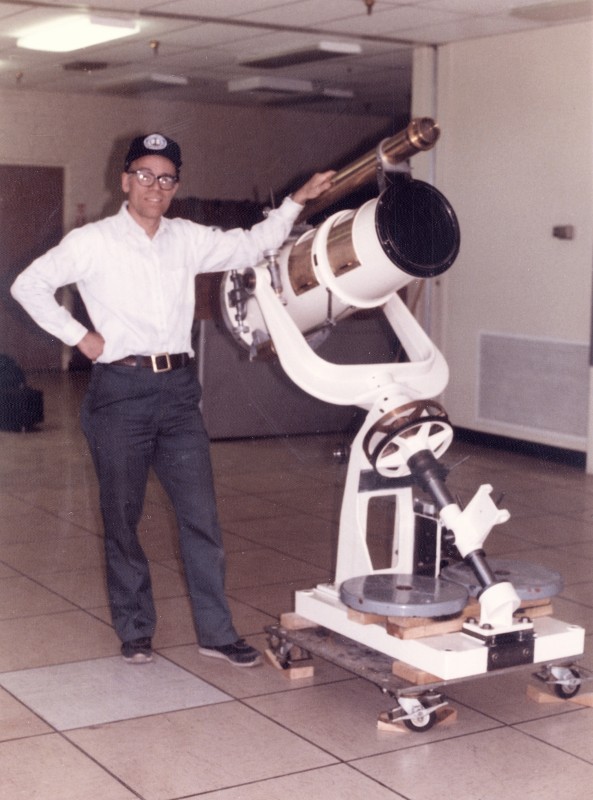
The complete refurbished 10-inch Schmidt camera - 1985 - with the author.
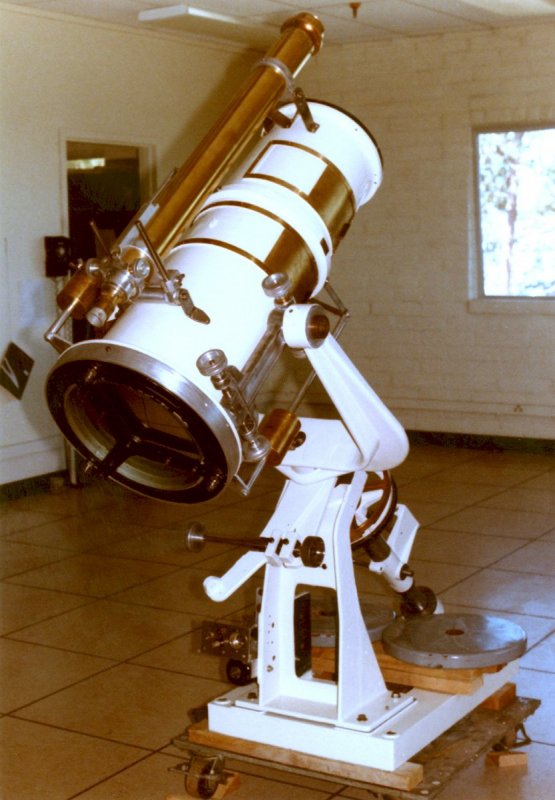
The complete refurbished 10-inch Schmidt camera - Summer 1985
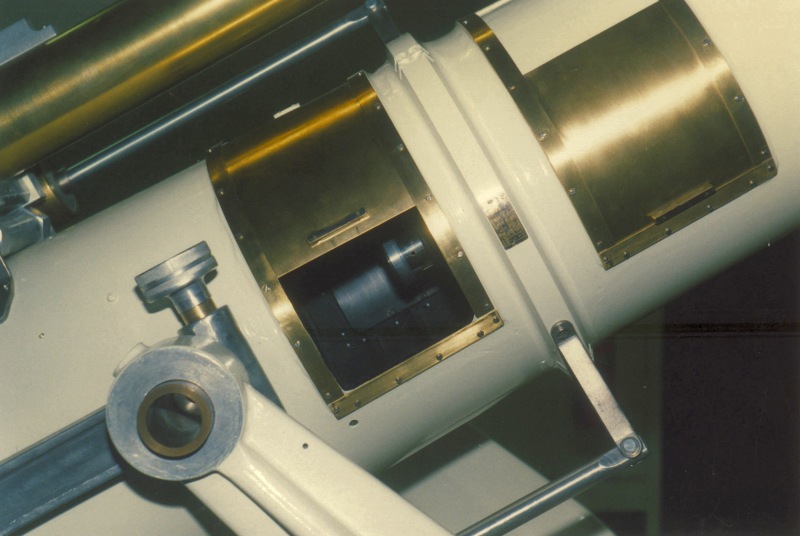
Sliding door enclosure to access the internal film holder (opened at center). The second
sliding door enclosure (closed at right center) allowed access to the focus knob.
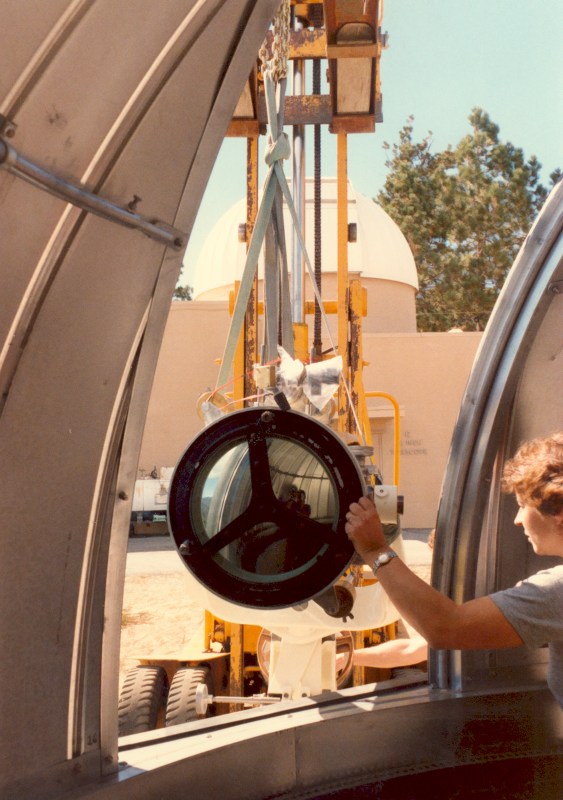
Table Mountain facility staff member, Marty Schmoe (right), guiding the Schmidt
camera tube assembly into the TM-24 dome - September 1985
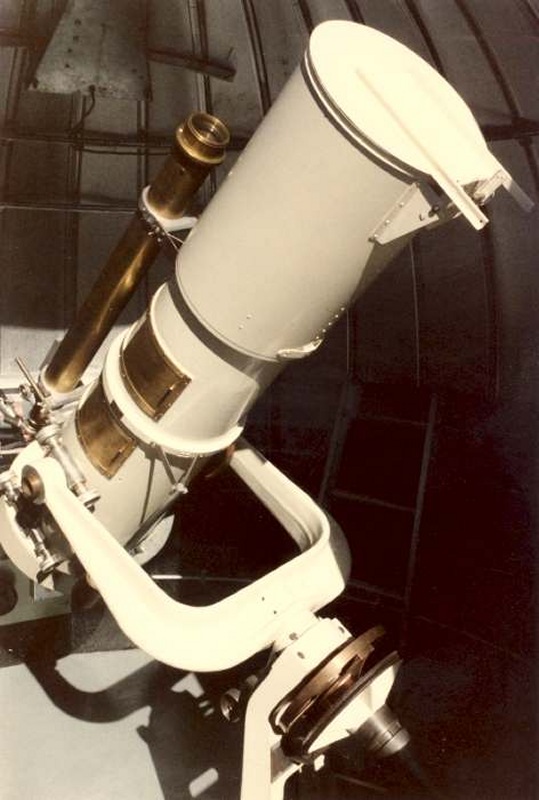
Installed Schmidt camera ready for testing - October 1985
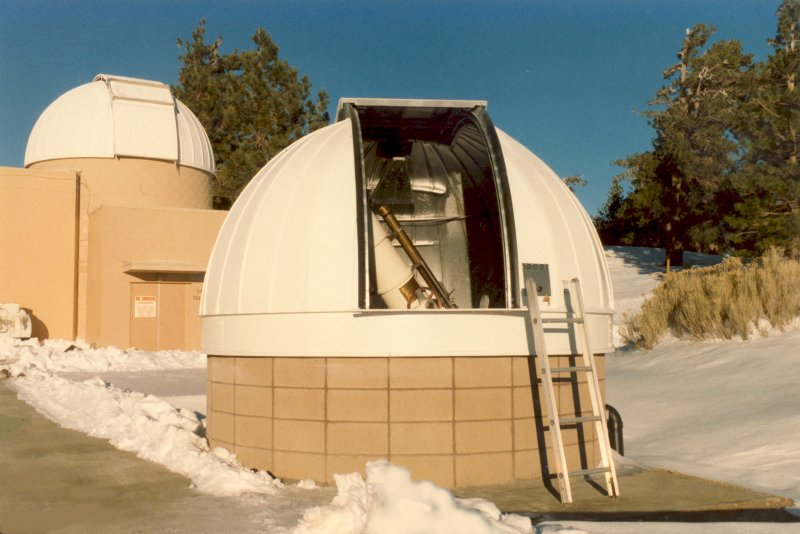
The completed TM-24 building and entry ladder (outside and inside). The user manually
opens the small square entry door on the dome wall (next to the top of the ladder) to
access the dome shutter opening controls to open the shutter. The user then climbs up
the ladder, over the lip, and climbs down the inside ladder to complete an entry for use.
The electrical power and phone line enters the building through the black sewer pipe seen
on the lower right of the dome wall. November 1985
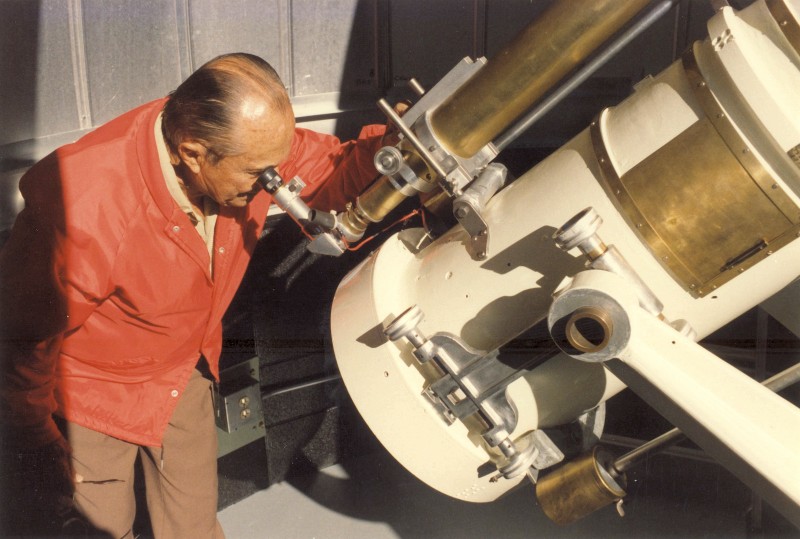
The owner of the camera, Ted Haberman, visited the observatory in November 1985
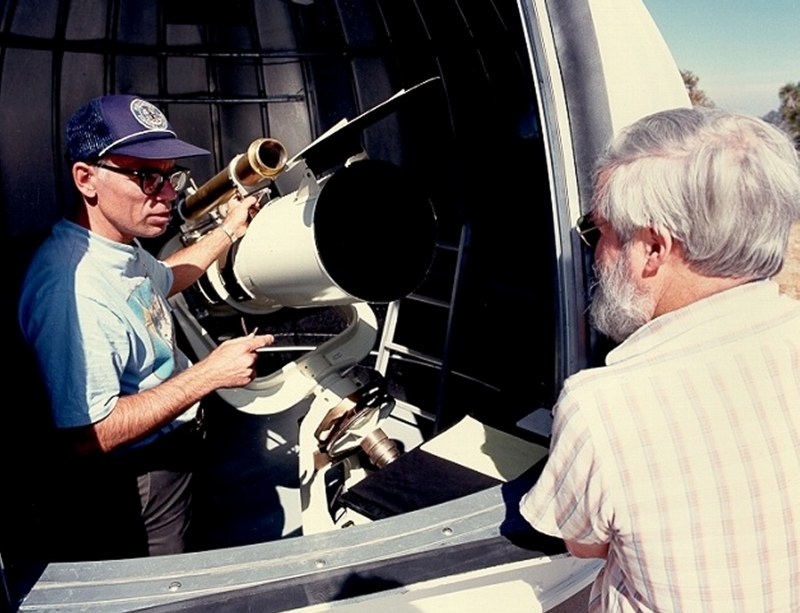
The author showing the Schmidt camera to fellow astronomer, Jim Gibson in early 1986.
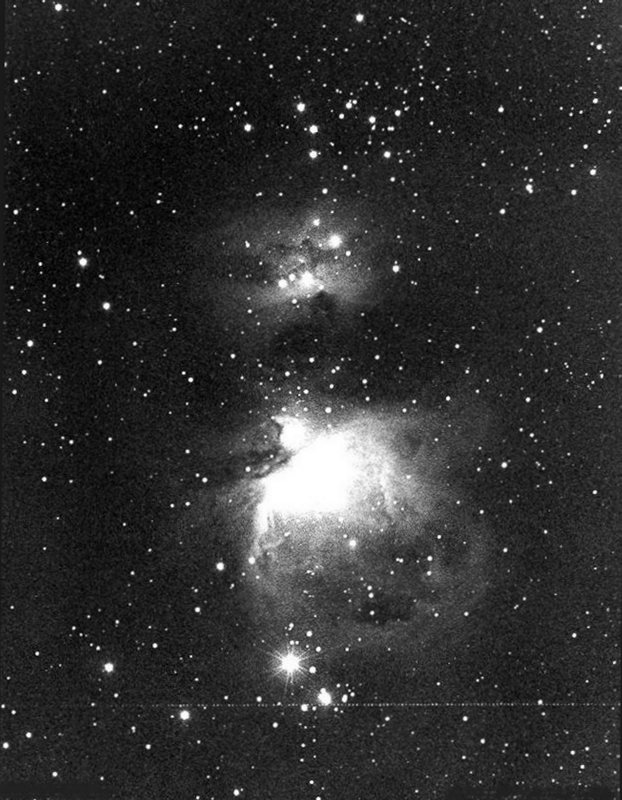
All alignment and focus tests of the Schmidt telescope were completed during the winter of
1985-86. This image of the Orion Nebula was the first serious photograph obtained after
all of the preparations were made for its primary use to photograph Halley's Comet starting
in March 1986 when the comet became a morning object.
Halley's Comet - Schmidt Camera
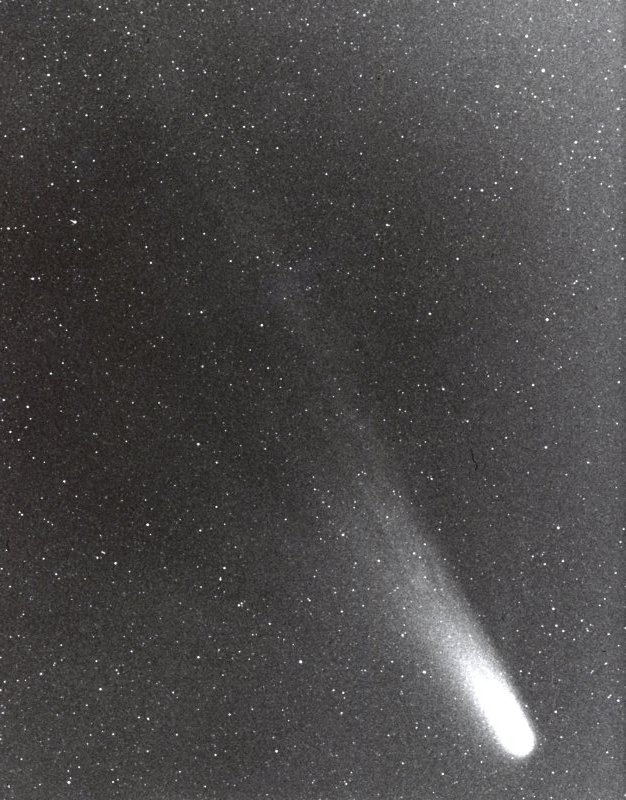
March 9, 1986
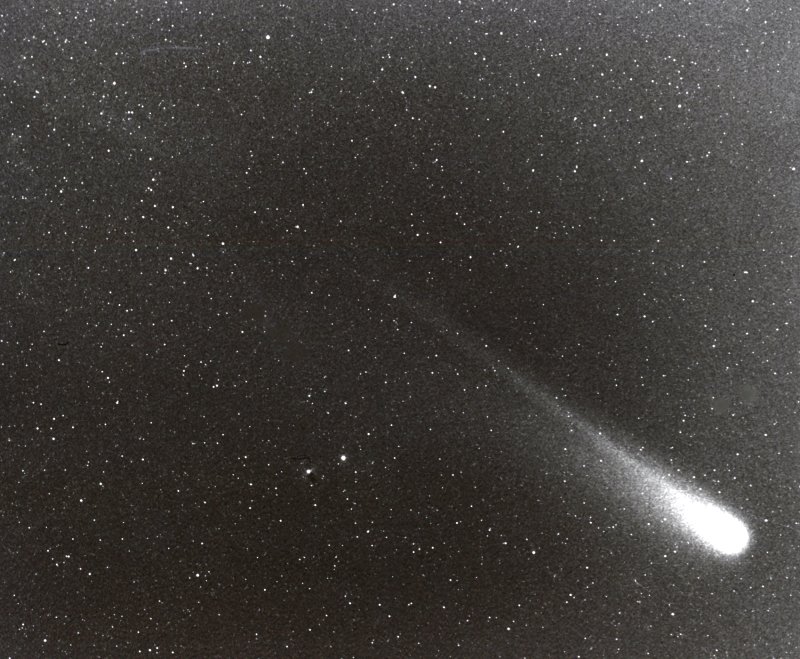
March 19, 1986
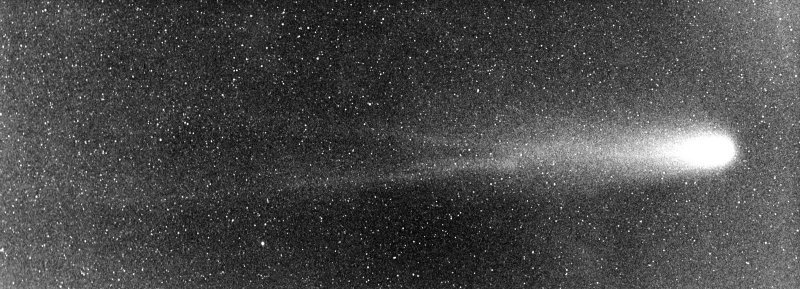
March 20, 1986
This was the best image of Halley's Comet which showed a split tail.
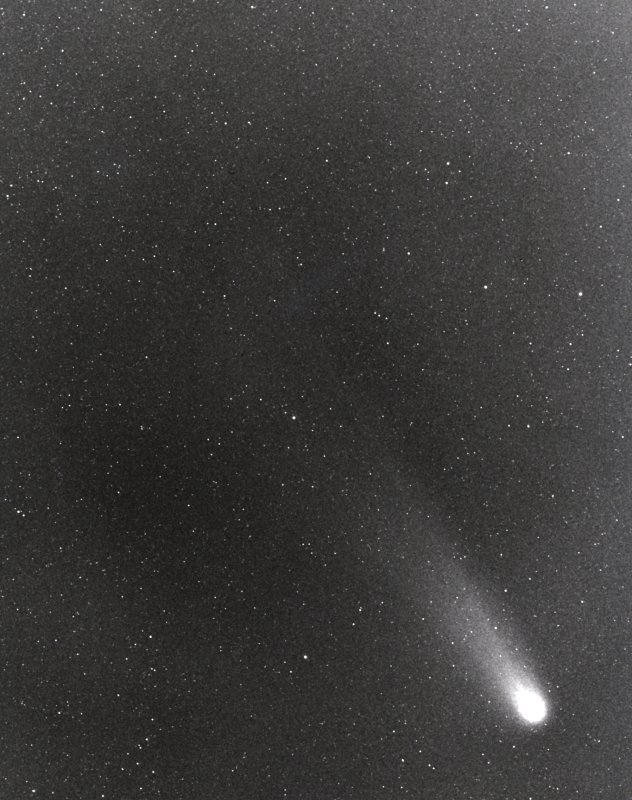
March 22, 1986
NOTE: After 1986, Haberman's health deteriorated to the point he
no longer wanted the camera returned, so JPL purchased it from him
for $10,000.
In 2002, the Schmidt camera was removed from TM-24, and a new RC Optical Systems
16-inch f/9 telescope was installed to supplement the astrometry science being done with
the 24-inch in TM-12. This new change was done under the direction of Gil Clark, our
new Table Mountain Astronomy Supervisor.
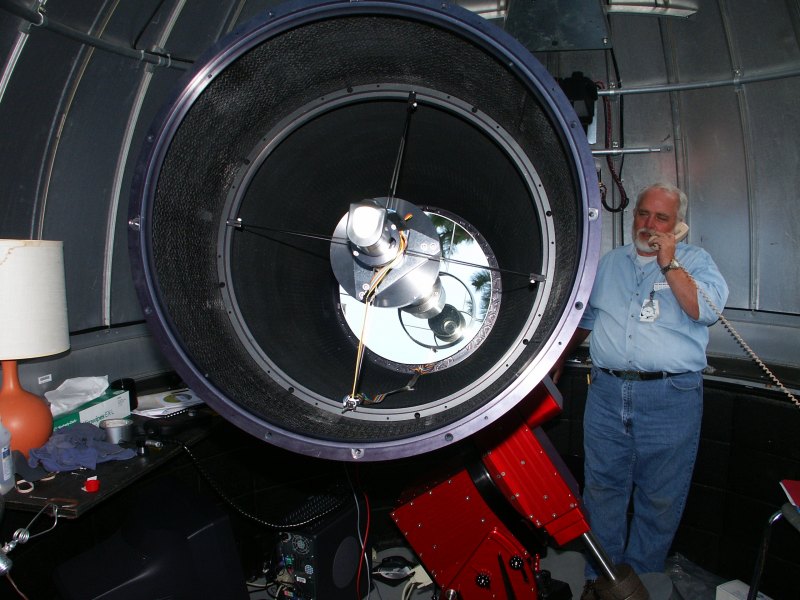
The new RC Optical Systems telescope, with Gil Clark on the telephone - 2002
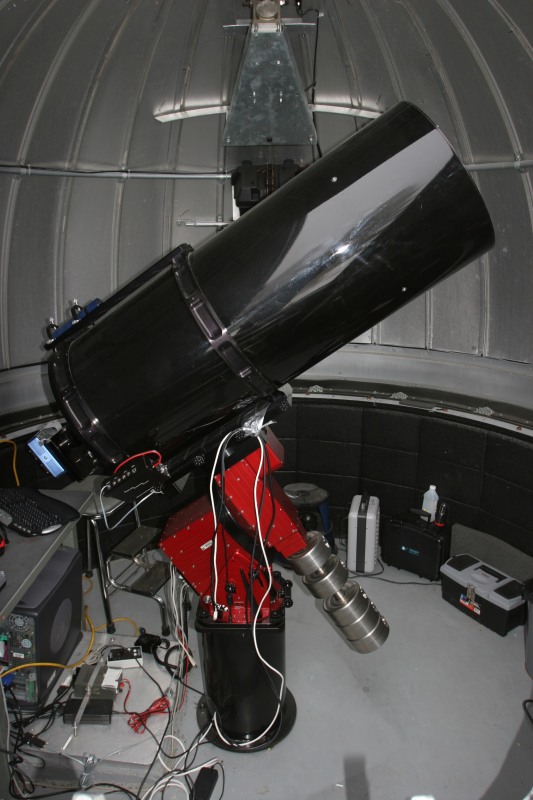
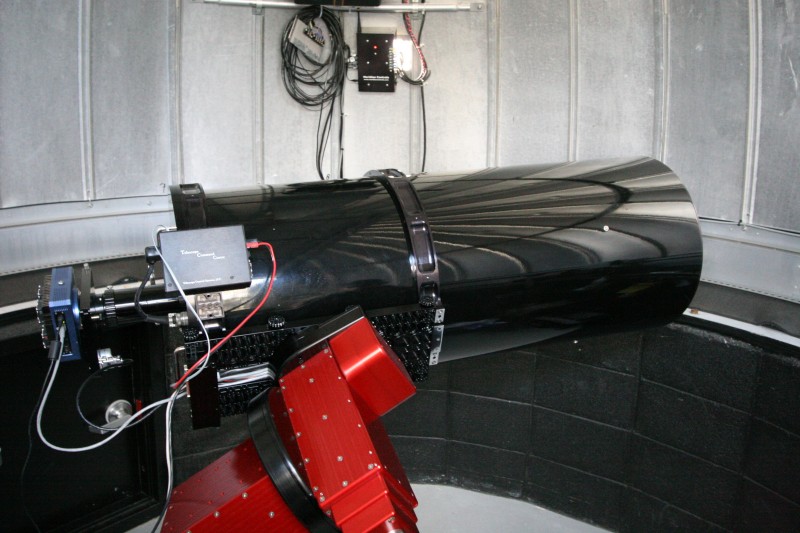
Two views of the RC Optical Systems 16-inch telescope
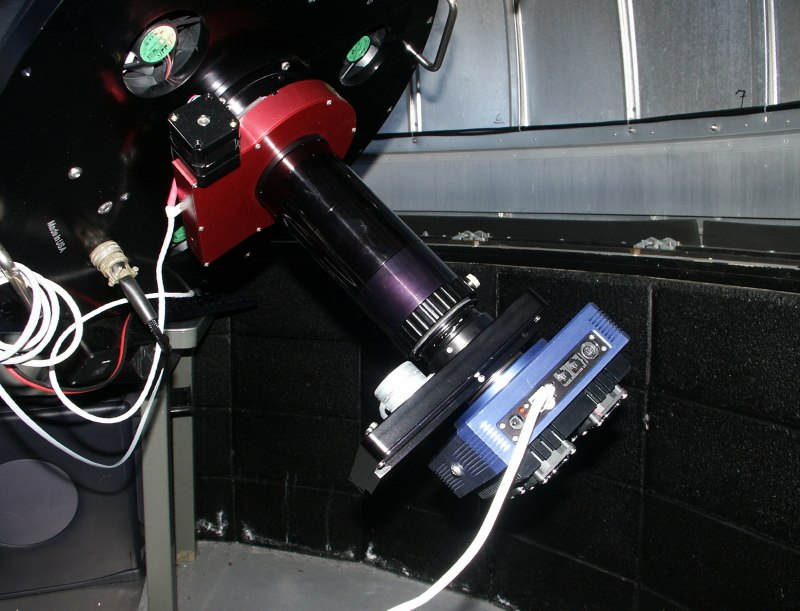
The Apogee CCD camera attached to the telescope
End of Part 5 Part 6A